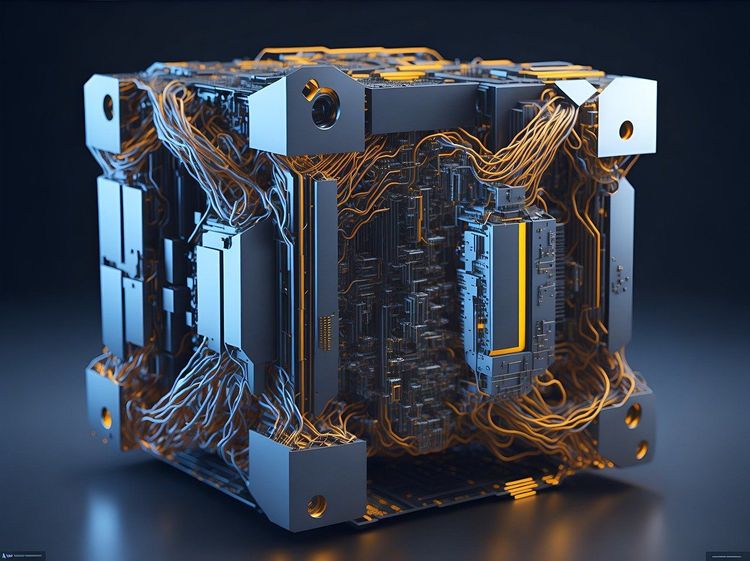Generative AI models have been the focus of attention, and for good reason, as they continue to evolve. Recently, as more cloud providers enter the generative AI market, a new wave of models is emerging, targeting one of the most lucrative segments: the enterprise.
A prime example is Snowflake, the cloud computing powerhouse, which has just launched Arctic LLM, an “enterprise-grade” generative AI model. This model, licensed under Apache 2.0, is specifically optimized for “enterprise workloads” like generating database code, making it free for both research and commercial applications.
“I believe this will serve as a foundational tool for Snowflake and our customers to develop enterprise-grade products and unlock the full potential of AI,” said CEO Sridhar Ramaswamy during a recent press briefing. “Consider this a significant first step into generative AI, with much more to follow.”
An Enterprise-Focused Model
My colleague Devin Coldewey recently discussed the relentless influx of generative AI models. While I recommend checking out his article, the main takeaway is that such models generate buzz for vendors and act as conduits to their broader product ecosystems (including model hosting and fine-tuning).
Arctic LLM fits this mold. It represents Snowflake's flagship entry in a new range of generative AI models branded Arctic, which took approximately three months of training, used 1,000 GPUs, and cost around $2 million to develop. This launch comes shortly after Databricks introduced its own enterprise-optimized generative model, DBRX.
Snowflake draws direct comparisons between Arctic LLM and DBRX, claiming that Arctic LLM excels in coding tasks (though the specific languages weren’t disclosed) and SQL generation. They also assert that Arctic LLM outperforms Meta’s Llama 2 70B (but not the newer Llama 3 70B) and Mistral’s Mixtral-8x7B in these areas.
The company also boasts that Arctic LLM achieves “leading performance” on a well-known language understanding benchmark, MMLU. However, it's worth noting that while MMLU tests generative models' reasoning abilities, some of its tasks can be solved through simple memorization, so take that claim with caution.
“Arctic LLM addresses distinct needs within the enterprise sector,” said Baris Gultekin, Snowflake’s head of AI, in an interview. “We are shifting our focus from general AI applications, like poetry generation, to enterprise-specific challenges, such as SQL co-pilots and advanced chatbots.”
Arctic LLM, similar to DBRX and Google’s leading generative model, Gemini 1.5 Pro, employs a mixture of experts (MoE) architecture. This approach effectively breaks down data processing tasks into manageable pieces, delegating them to specialized “expert” models. As a result, Arctic LLM has 480 billion parameters but activates only 17 billion at any one time — sufficient to support 128 different expert models. (In AI, parameters essentially measure a model’s capability to analyze and generate text.)
Snowflake highlights that this efficient structure allowed them to train Arctic LLM using openly available web data sets—such as RefinedWeb, C4, RedPajama, and StarCoder—at roughly one-eighth the cost compared to other models.
Accessible Across Platforms
To assist users in deploying and refining Arctic LLM for their specific needs, Snowflake is offering resources such as coding templates and a comprehensive list of training resources. Acknowledging the potential complexity and cost involved (fine-tuning or running Arctic LLM typically requires about eight GPUs), Snowflake is also committed to making Arctic LLM available on various platforms, including Hugging Face, Microsoft Azure, Together AI’s model hosting service, and the enterprise generative AI platform Lamini.
However, Arctic LLM will initially be launched exclusively on Cortex, Snowflake’s environment for developing AI and machine learning-based applications. Naturally, they are promoting it as the optimal way to utilize Arctic LLM, emphasizing “security,” “governance,” and scalability.
“Our ambition is to have an API ready within a year, enabling business users to interact directly with data,” Ramaswamy explained. “Rather than waiting for an open-source model, we made a foundational investment, believing it will deliver increased value for our clients.”
This brings up a question: who precisely will benefit from Arctic LLM beyond Snowflake's customer base?
In a field saturated with “open” generative models adaptable for various applications, Arctic LLM doesn’t distinguish itself in a significant way. While its architecture may offer some efficiency improvements, they might not be substantial enough to entice enterprises away from other reputable and well-supported generative models (like GPT-4).
Additionally, there’s a notable limitation: Arctic LLM has a relatively small context window.
In the realm of generative AI, a context window defines how much input data (like text) a model considers before generating output (such as more text). Models with limited context windows often struggle to retain even recent information, while those with larger windows excel in this regard.
Arctic LLM’s context ranges from about 8,000 to 24,000 words, depending on the fine-tuning method, significantly lower than that of models like Anthropic’s Claude 3 Opus and Google’s Gemini 1.5 Pro.
Snowflake does not emphasize this in its marketing, but it’s likely that Arctic LLM experiences the same common issues faced by other generative AI models, including hallucinations (i.e., producing confident but incorrect outputs). Arctic LLM, like all generative AI models, functions based on statistical probabilities and has a limited context window, meaning it can make inaccurate guesses about what data should come next in a sequence.
As Devin noted, the current trajectory in generative AI offers mainly incremental improvements until a major breakthrough occurs. Nonetheless, vendors like Snowflake will continue to market these advancements as significant achievements and leverage them to their full potential.







